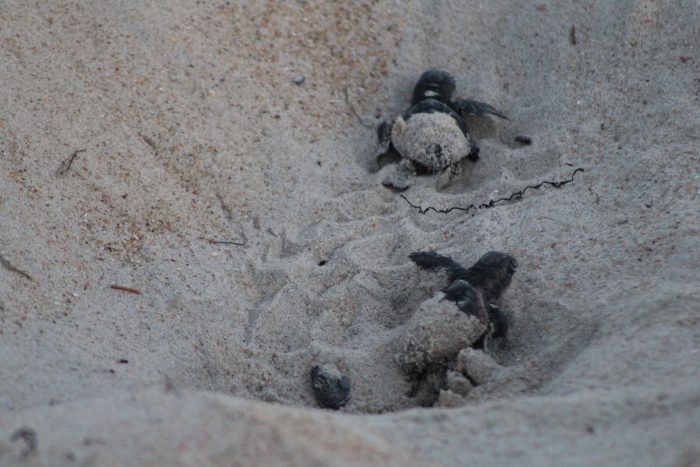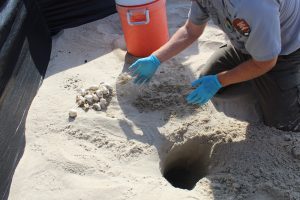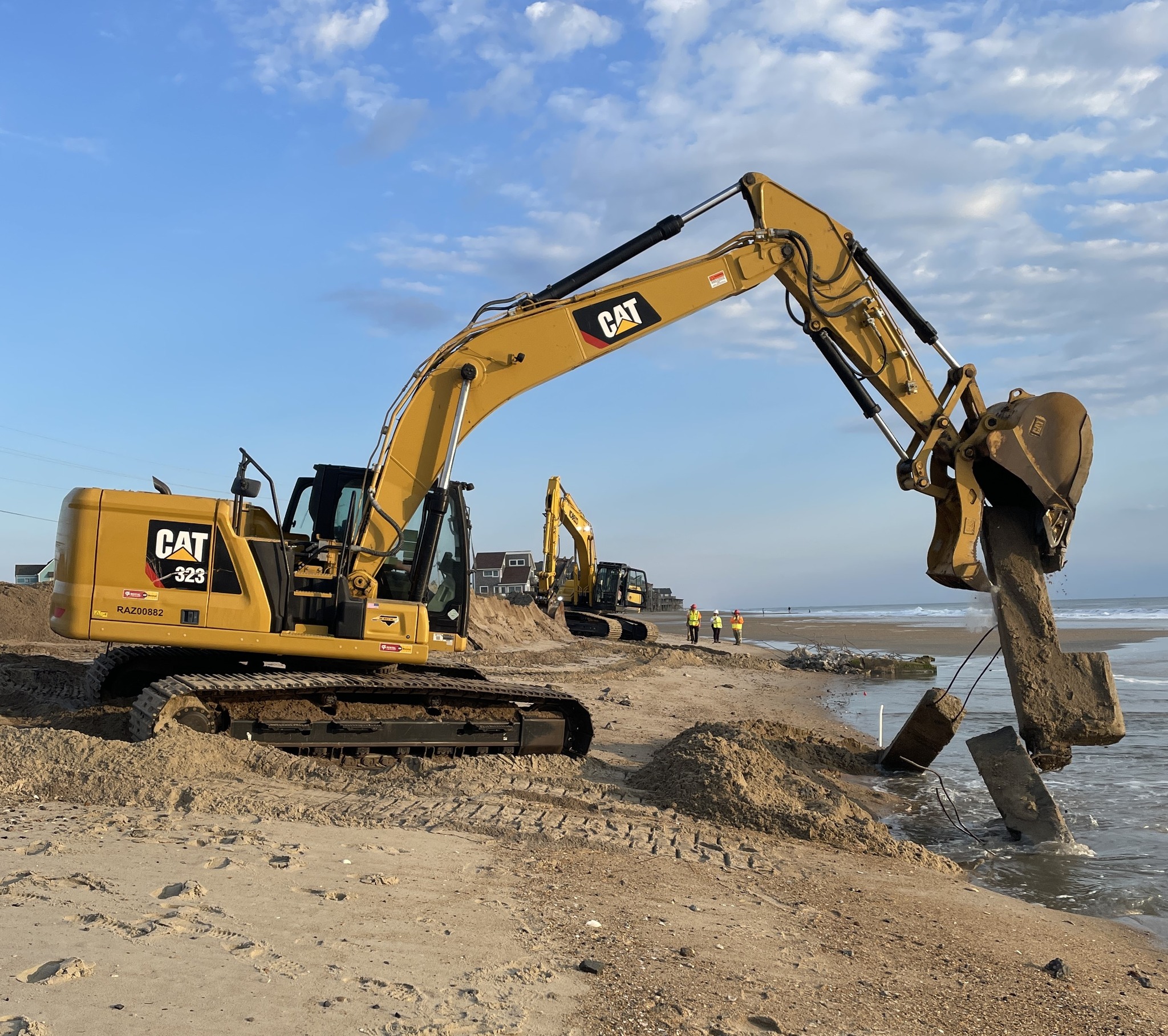2021 is shaping up to be a great year for nesting sea turtles

With the sea turtle nesting season winding down, 2021 is proving to be another highly impressive year, with a total of 315 sea turtle nests recorded within the Cape Hatteras National Seashore (CHNS) as of Friday, October 8.
23 nests within the National Seashore are still incubating, and newly-laid sea turtle nests were once again discovered late in the season this year, with the most recent new nest reported on September 30. (In 2020, a sea turtle nest was discovered on October 31, which is the latest nest ever reported at CHNS since at least 1997.)
The 315 nests do not set a new record, but it is a significantly higher number than 2020’s total of 228 nests within the National Seashore.
2019 saw a total of 473 nests along the CHNS shoreline, which was the highest number of nests reported since data started being collected in the 1970s. Loggerhead sea turtles, which are the most common species to lay eggs on the East Coast, tend to nest at intervals of 2-4 years, and 2021 may represent the start of a new upswing cycle.
For comparison, the total number of sea turtle nests within the National Seashore for the past ten years is as follows:
- 2020: 228 nests
- 2019: 473 nests
- 2018: 166 nests
- 2017: 178 nests
- 2016: 325 nests
- 2015: 289 nests
- 2014: 134 nests
- 2013: 254 nests
- 2012: 222 nests
- 2011: 147 nests
Per http://www.seaturtle.org/, which has monitored sea turtle nesting activity within the National Seashore for the past five decades, the majority of the 2021 nests were from loggerhead turtles, but there have also been 14 green turtle nests and three Kemp’s Ridley turtle nests recorded this year as well.
While the nesting season is almost complete for the year, visitors should still use caution for the nearly two dozen nests that currently remain on the CHNS beaches, which will be hatching in the near future.

Once sea turtle eggs hatch, the hatchlings use a combination of cues to find the ocean so they can make a mad dash to the waters, which includes the reflection of the moon or starlight off of the water. Because hatchlings are very sensitive to light as they emerge from their nests, they can become disoriented towards any light that mimics the moon or stars over the ocean.
As such, visitors along the oceanfront who may be staying close to an established sea turtle nest are encouraged to turn off their outdoor lights and close their blinds or drapes after dark, so that the sea turtles don’t mistake a stray porch light for the ocean.
People on the beach after dark should refrain from using flashlights or cellphones near established nests, as bright, artificial light can also send additional mixed signals to the newly emerged sea turtle hatchlings.
Beachgoers should also remove beach equipment, such as lounge chairs, umbrellas, tents and other items from the beach when they leave. If left on the beach, these items can be roadblocks for hatchlings who are trying to make their way to the ocean.
Other tips to help protect sea turtles and hatchlings during the nesting season, per the N.C. Wildlife Resources Commission, include the following:
- Fill in all holes in the sand at the end of the day.
- Pick up all your trash when you leave.
- If fishing, properly dispose of any fishing line. Improperly discarded fishing line is often deadly to turtles, birds and other marine animals.
- Use your natural vision and moonlight when walking the beach at night.
- If you encounter a turtle on the beach at night, remain quiet, still, and at a distance. Flash photography and human disturbances may prevent her from nesting successfully.
Visitors who notice any sea turtle nesting activity are advised to call the Cape Hatteras National Seashore to report the sighting at 252-216-6892.










